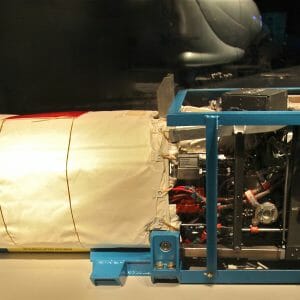E – 1578 The Many Possible Uses of Scrap Tires
$150.00
Courses Included
This online engineering PDH course describes how scrap tires can be recycled into many useful products. The course begins by noting that hundreds of millions of scrap tires are found in piles in the U.S. – Mexico border area (The information in the course has been developed specifically for the U.S. – Mexico border area, but is useful for any region with large numbers of scrap tires). These piles pose a public health concern, as they are breeding grounds and havens for mosquitoes that spread disease. Scrap tires are also a significant environmental problem as a result of fire hazards, water contamination, and the leaching of small amounts of zinc, sulfur and other materials found in tire rubber. This course describes how scrap tires can be converted from a health and environmental problem into a resource. Three main areas of applications are identified: 1) ground rubber (athletic surface material, molded and extruded products, rubber-modified asphalt); 2) energy use (heating for cement kilns, the paper industry, power generation); and 3) tire-derived aggregates or “TDA” (drainage aggregate, lightweight fill, landfill gas collection, landslide stabilization). Transportation of tires and processing economics are also discussed. Throughout the course, many case studies from established recycling programs are presented.
This course is based on the Environmental Protection Agency document, “Scrap Tires: Handbook on Recycling Applications and Management for the U.S. and Mexico,” EPA530-R-1-010, December, 2010.
Description
This online engineering PDH course describes how scrap tires can be recycled into many useful products. The course begins by noting that hundreds of millions of scrap tires are found in piles in the U.S. – Mexico border area (The information in the course has been developed specifically for the U.S. – Mexico border area, but is useful for any region with large numbers of scrap tires). These piles pose a public health concern, as they are breeding grounds and havens for mosquitoes that spread disease. Scrap tires are also a significant environmental problem as a result of fire hazards, water contamination, and the leaching of small amounts of zinc, sulfur and other materials found in tire rubber. This course describes how scrap tires can be converted from a health and environmental problem into a resource. Three main areas of applications are identified: 1) ground rubber (athletic surface material, molded and extruded products, rubber-modified asphalt); 2) energy use (heating for cement kilns, the paper industry, power generation); and 3) tire-derived aggregates or “TDA” (drainage aggregate, lightweight fill, landfill gas collection, landslide stabilization). Transportation of tires and processing economics are also discussed. Throughout the course, many case studies from established recycling programs are presented.
This course is based on the Environmental Protection Agency document, “Scrap Tires: Handbook on Recycling Applications and Management for the U.S. and Mexico,” EPA530-R-1-010, December, 2010.
- Scrap tire management programs
- Ground rubber
- Major U.S. ground rubber markets
- Athletic and recreational surfaces market
- Molded and extruded products
- Rubber-modified asphalt
- Kilns, pulp and paper industry heating
- Energy production
- TDA as drainage aggregate
- TDA as lightweight fill
- Whole tires for wall construction
- Transportation and processing economics
- Collection and transportation
- Processing
- Economic sensitivity






